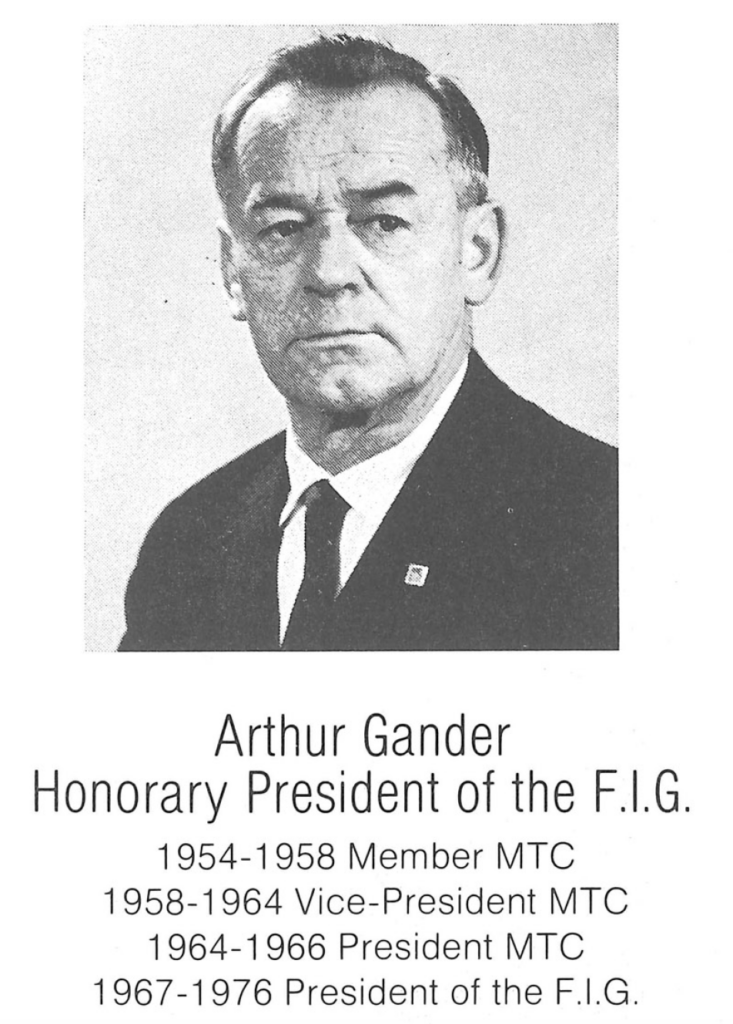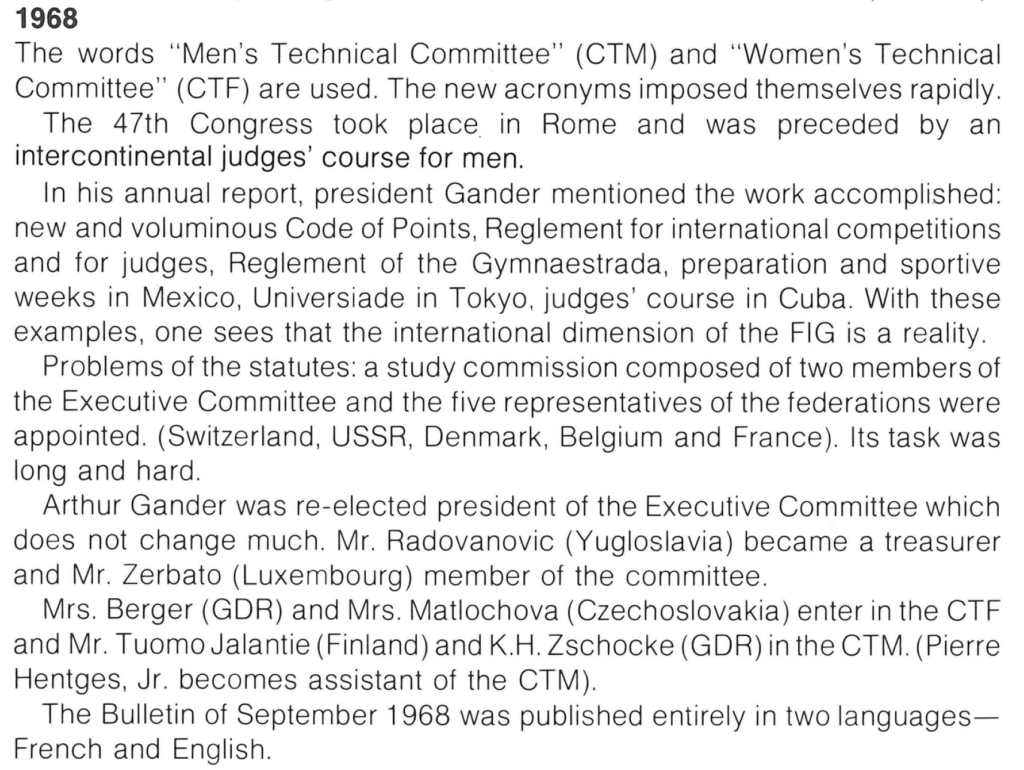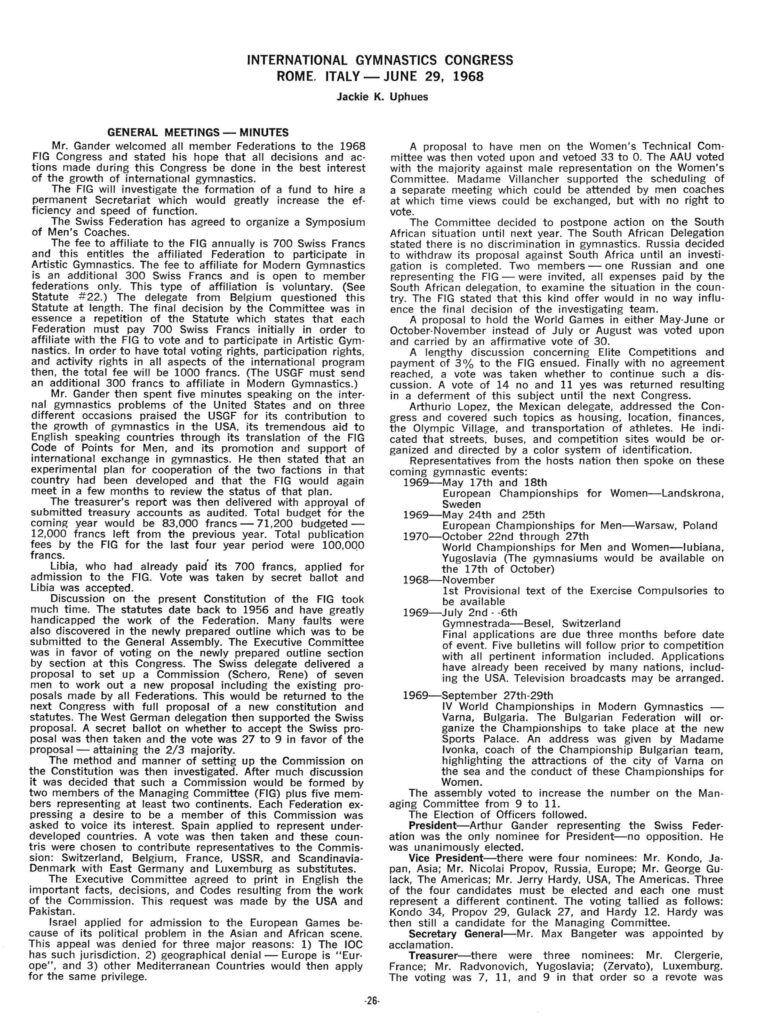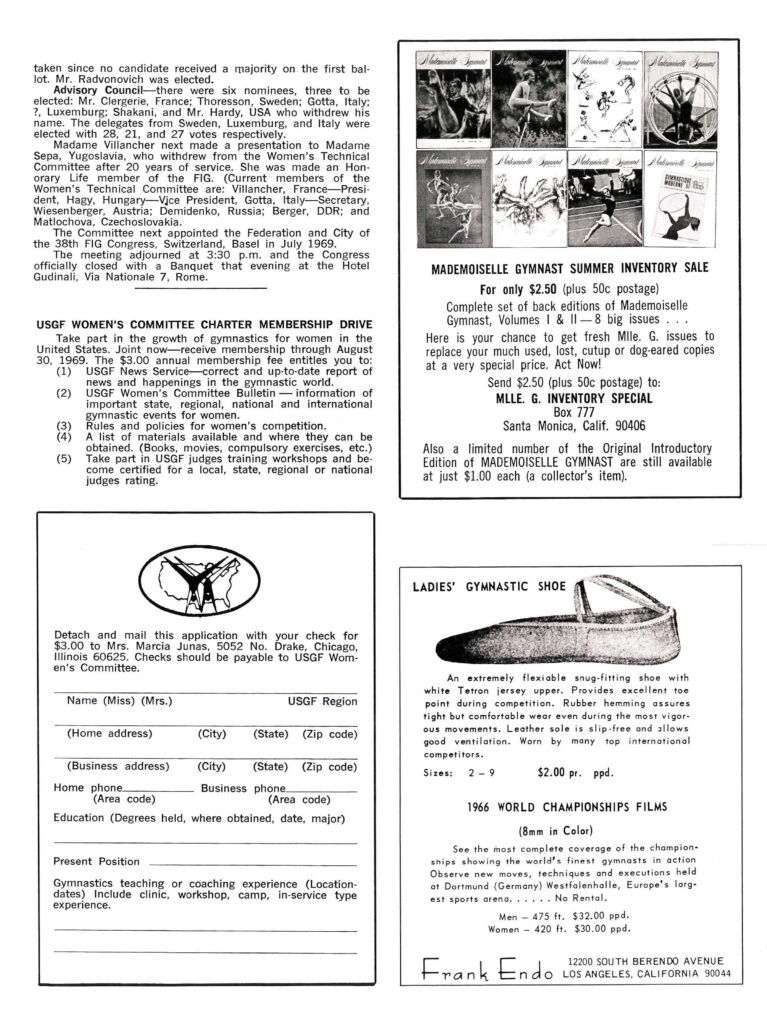How much did it cost to be an FIG member in 1968? What was the FIG’s budget in 1968? Will Israel finally be approved to compete in the European Championships?
All that and more in the notes from the 1968 FIG Meeting.
The following notes are culled from 100 Years of the FIG and an article by Jackie Uphues (Fie) (USA) in the Sept/Oct 1968 issue of Mademoiselle Gymnast.
Decision
Libya was accepted as a member delegation in artistic gymnastics.
Decision
There were problems with the statutes of the constitution, which date back to 1956.
- A commission was created to look into the matter.
- Two members of the Managing Committee would lead the commission.
- A vote was taken, and Switzerland, Belgium, France, the Soviet Union, and Denmark would be part of the commission.
- The Executive Committee agreed to print in English the important decisions and Codes
Decision
Israel applied for admission to the European Championships and, once again, was rejected.
Decision
A proposal was made to add men to the Women’s Technical Committee. That proposal was rejected. In other words, women’s gymnastics would remain a sport run by women for women.
Villancher supported the idea of scheduling a separate meeting that male coaches could attend without voting rights.
Decision
Postpone action on South Africa.
- The Soviet Union once again motioned to exclude South Africa.
- The South African delegration stated that there was no discrimination in gymnastics.
- This time, the South African Delegation invited two members of the FIG (one Soviet and one representing the FIG), all expenses paid, to examine the situation in South Africa.
- The Soviet Union withdrew its proposal until the investigation could be completed.
This decision had major ramifications for the FIG, including canceling an FIG competition the day before it was set to begin.
You can read more about that in this post.
Election of the officers
- President: Arthur Gander ran uncontested and won unanimously
- Vice Presidents: Kondo, Japan, representing Asia; Propov, Soviet Union, representing Europe; Gulack, United States, representing the Americas
- Yes, it’s the same Gulack from the history of the United States Gymnastics Federation
- Secretary General: Max Bangeter was elected unanimously
- Treasurer: Radvanovich of Yugoslavia was elected
- Men’s Technical Committee: Zschocke (East Germany) and Jalantie (Finland) were added to the committee.
- Women’s Technical Committee: Berger (East Germany) and Matlochová (Czechoslovakia) were added to the committee. Other members included:
- President: Villancher (France)
- Vice President: Nagy (Hungary)
- Secretary: Gotta (Italy)
- Wiesenberger (Austria)
- Demidenko (USSR)
So, heading into the 1968 Olympics, there were members from the two top teams — the USSR and Czechoslovakia — on the Women’s Technical Committee. In theory, the members of the WTC were not supposed to represent a country’s interests.

The Business of Gymnastics
I don’t think gymnastics fans understand how financially strained the FIG used to be.
Membership Fees
In 1968, the membership fees were
- Artistic gymnastics: 700 Swiss Francs
- Modern gymnastics (now called rhythmic gymnastics): 300 Swiss Francs
In other words, for 700 Swiss Francs, you could vote and participate in artistic gymnastics.
For a total fee of 1,000 Swiss Francs, you would have total voting and participation rights for both artistic gymnastics and modern gymnastics.
On March 31, 1968, $1 USD was equivalent to 4.346 Swiss Francs, so the conversion was roughly:
- Artistic gymnastics: Roughly $161 USD
- Modern gymnastics: Roughly $69 USD
For comparison’s sake, here are the annual membership fees for the 2017-2021 cycle:
- 400 CHF (roughly $435.00 USD) for the initial membership
- 100 CHF (roughly $108.00 USD) for each additional discipline
(Thanks to Pamchenkova for helping me track down the membership fees nowadays.)
Treasurer’s Report
Total budget for the year: 83,000 Swiss Francs (roughly, $19,098 USD at the time).
That’s it!
For comparison, in 2019, the income for the FIG was 16.65 million Swiss Francs (roughly $17.06 million USD) with 15.5 million Swiss Francs in expenses (roughly $15.6 million USD). Gymnastics has grown into a money machine.
That said, it was an improvement from the 3,605 Swiss Francs that it had in the bank in 1950:
The federation was not wealthy: the funds first transferred to Switzerland amounted to 3,605 Swiss Francs.
100 Years of the FIG
P.S. This is unrelated, but I’m including it for the money-minded people. Here were the costs to the sports delegations for the Olympics in 1968:
The Organizing Committee charged the sports delegations $8.00 a day per person during the period September 12 to 27. This included food, lodging, and transportation. During the period of adaptation for the athletes—September 28 to October 11—no charge was made for food, lodging and transportation. This was in compliance with an agreement made by the Mexican Olympic Committee with the IOC as part of its petition to host the Games. From October 12 to November 7 the charge was $4.00 daily for members of sports delegations. Other guests at the Olympic and Coapa Villages paid $4.00 for a shared room and $8.00 for private accommodations. These charges included lodging, breakfast, and transportation. A price of $2.00 for each meal was set for lunch and dinner. Participants in the Cultural Program were not included in the cost-free period of adaptation.



More on 1968
One reply on “1968: Notes from the 47th FIG Congress in Rome”
Hi, where did you see the current membership fee for FIG? I was looking for the document about it on their website but can’t find it.